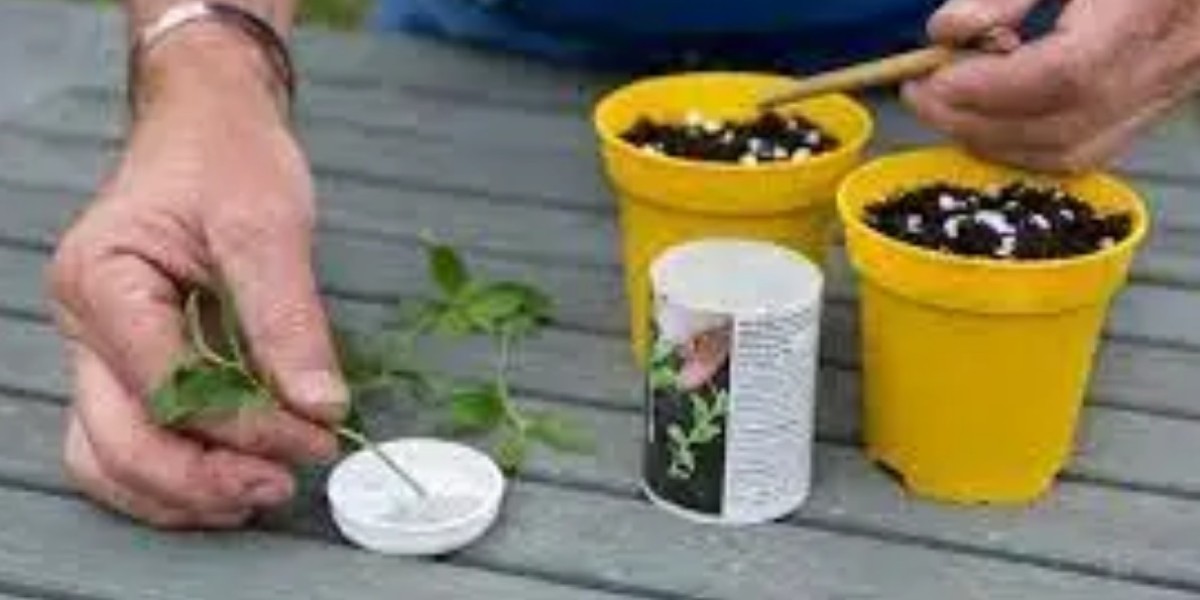Propagating plants through cuttings is an excellent way to expand your garden without spending a fortune. However, getting cuttings to root successfully can be challenging, especially for beginners. This is where rooting hormones come into play. If you’re wondering how to use rooting hormones on cuttings effectively, this guide has you covered. By the end, you’ll feel confident in boosting your propagation success rate.
What Are Rooting Hormones?
Rooting hormones are substances that stimulate root growth in plant cuttings. They mimic natural plant hormones, encouraging the development of new roots. These products come in various forms, such as powders, liquids, and gels, and are widely available at garden centers and specialty stores like South El Monte Hydroponics.
Why Use Rooting Hormones on Cuttings?
Using rooting hormones significantly improves the chances of successful propagation. Here's why they are beneficial:
- Enhanced Root Development: They encourage faster and stronger root formation.
- Increased Success Rate: They reduce the likelihood of cuttings wilting or failing to root.
- Versatility: They work on various plant types, from flowers to shrubs and trees.
While not all plants require rooting hormones, they are especially useful for difficult-to-root species.
Tools and Materials You’ll Need
Before learning how to use rooting hormones on cuttings, gather the following items:
- Pruning shears or scissors
- A clean container for the rooting hormone
- Fresh water
- Potting soil or another growing medium
- Small pots or containers for planting
- A rooting hormone (powder, gel, or liquid)
How To Use Rooting Hormones On Cuttings
Follow these simple steps to ensure your plant cuttings thrive:
1. Choose Healthy Cuttings
First, select healthy plant stems to propagate. The cutting should be about 4-6 inches long, with at least one leaf node. Make the cut at a 45-degree angle using clean, sharp pruning shears.
2. Prepare the Rooting Hormone
If you’re using powder or gel, pour a small amount into a clean container. Avoid dipping cuttings directly into the main container to prevent contamination. For liquid hormones, follow the label’s dilution instructions carefully.
3. Trim and Moisten the Cutting
Remove any leaves near the base of the cutting. Dip the bottom end into water to help the rooting hormone adhere.
4. Apply the Rooting Hormone
Dip the moistened end of the cutting into the rooting hormone, ensuring an even coating. Gently tap off any excess powder or gel to avoid overapplication.
5. Plant the Cutting
Place the treated end of the cutting into a pot filled with moist potting soil or your preferred growing medium. Press the soil gently around the stem to secure it.
6. Provide Optimal Conditions
Place the pot in a warm, humid environment with indirect sunlight. Covering it with a plastic bag or a propagation dome can help maintain humidity.
7. Monitor Progress
Check the soil regularly to ensure it remains moist but not waterlogged. After a few weeks, gently tug the cutting to see if roots have formed.
Tips for Success
To maximize the effectiveness of rooting hormones, consider these additional tips:
- Use Fresh Hormones: Replace old rooting hormones, as they lose potency over time.
- Avoid Overwatering: Excess moisture can lead to rot and fungal growth.
- Sterilize Tools: Clean your shears and containers to prevent infections in the cuttings.
- Experiment With Different Hormones: Some plant species respond better to specific types of rooting hormones.
Common Mistakes to Avoid
When learning how to use rooting hormones on cuttings, avoid these errors:
- Skipping the Label Instructions: Overusing hormones can harm the cutting instead of helping it.
- Using Unhealthy Cuttings: Damaged or diseased stems are unlikely to root, even with hormones.
- Neglecting Environmental Conditions: Inconsistent humidity or light can hinder root growth.
Frequently Asked Questions
1. Are rooting hormones necessary for all plants?
No, some plants root easily without hormones. However, they are invaluable for stubborn species.
2. How long does it take for roots to form?
Rooting time varies depending on the plant. It can take anywhere from a few days to several weeks.
3. Can I make homemade rooting hormones?
Yes, natural alternatives like honey or willow water can work, but they may not be as effective.
4. What’s the best type of rooting hormone to use?
The choice depends on your preference and the plant species. Gels are easy to apply, while powders offer long shelf life.
5. Can I reuse leftover rooting hormone?
No, always discard unused hormone to prevent contamination and ensure the best results.
Conclusion
Mastering how to use rooting hormones on cuttings can transform your gardening experience. By following these steps, you’ll significantly improve your propagation success rate and enjoy a thriving collection of plants. For additional gardening tips or to find high-quality rooting hormones, visit South El Monte Hydroponics.







